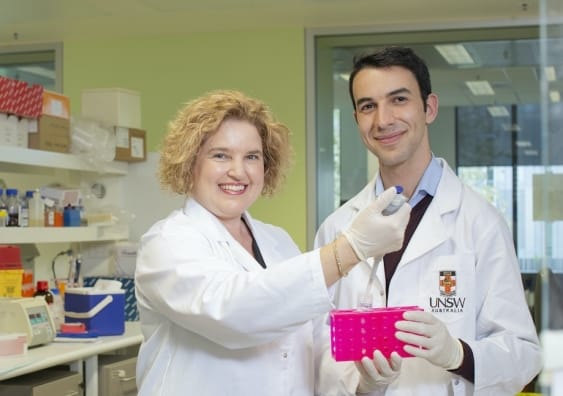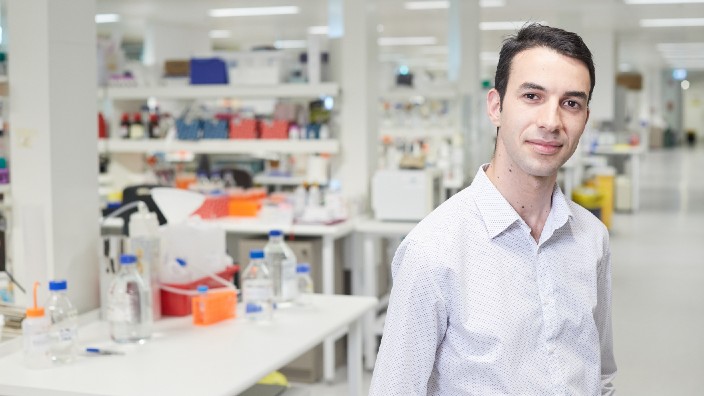
A team of medical researchers at the University of New South Wales (UNSW) including Greek Australian John Kokkinos, have achieved a unique milestone in the fight against pancreatic cancer.
The team led by world-leading cancer biologist Associate Professor Phoebe Phillips, have successfully grown a complete human tumour model in a petri dish.
Kokkinos who is a UNSW Scientia PhD student and the son of Father Dimitrios Kokkinos from St John Greek Orthodox Church in Parramatta, was challenged by Associate Professor Phillips to create the cancer model.
“One of the current gold standard models for testing therapeutics is the mouse – you give them pancreatic cancer and then test different treatments, but mouse tumours do not perfectly mimic the biology of the disease in patients,” Kokkinos told the UNSW Newsroom.
“Our ambitious vision – and the project I’ve been focused on for three years – was to take a human pancreatic tumour and keep it alive in a dish. If we could do that, we could use it to test which chemotherapeutics a patient’s tumour may respond best to,” he added.
Kokkinos also expressed how grateful he was to receive a Tour de Cure PhD support scholarship to complete this project.

The team’s model which stays intact for 12 days, offers a complete view of the tumour – an approach that has great potential for testing the effect of different drugs on the cancer.
On her part, Associate Professor Phillips said: “This is the first model of its kind that lasts this long – other labs have done something similar, but only for two or three days, and even then it doesn’t quite maintain the viability and the architecture of the tumours.”
The findings are published in Scientific Reports.
“What it will allow us to do is test up to 10 different drugs simultaneously on a surgical specimen,” Kokkinos continued.
“Because you get the result in a couple of weeks, you could go back and inform the clinical team about which drug is working best on a particular patient’s tumour – we hope that it’ll end up being a really rapid way to feed back into the clinical situation.”
The project hasn’t come without ups and downs. “It was a bit of a risk to start off with, I must say – we didn’t really know how it was going to turn out. There were a lot of failures along the way, things weren’t working out, but we kept persevering: we tried different things, we constantly went back to the drawing board.”
Kokkinos remembers the first time he realised their idea might just work. “I must say the first time we actually got it right and we saw that the tumour architecture and the viability was maintained for 12 days, that was something quite extraordinary.
“And then from there, it was about characterising the model, and looking at the individual cells that make up these mini tumours that we were growing, and then starting to test both the clinical drugs and the novel drugs, including our nanomedicine.”
Bravo John Kokkinos! We wish you all the best of luck in all of your future endeavours.

